October 16 — Friday
Fr. George stopped by at about 9:30, and we departed for the south, our first goal being Abastumani. Driving out of Tbilisi, we went by Mtskheta, the ancient capital of Georgia. Fr. George decided to stop in at one church in a village on the way. It is dedicated to the Holy Trinity and is operating. It seems they do filming there for something or other. We found this out when we asked what the red-painted grass was all about. We had to wait for a woman who lives down the way to bring the keys. We went in and venerated, looked around, took a few pictures and continued on our way.
We turned off the main road to go to Vardzia, an ancient monastery which is made up of caves carved out of the stone in a mountain. It is very far from the main road, and although the area on the main road is somewhat green, by the time we got to Vardzia, it was partly like the Sinai desert. On the way we saw
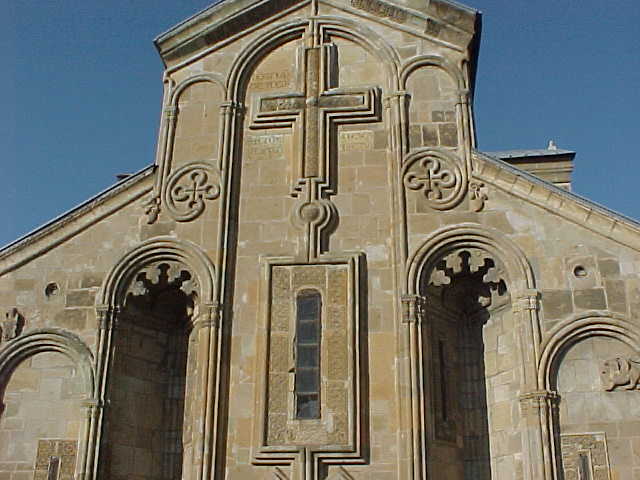
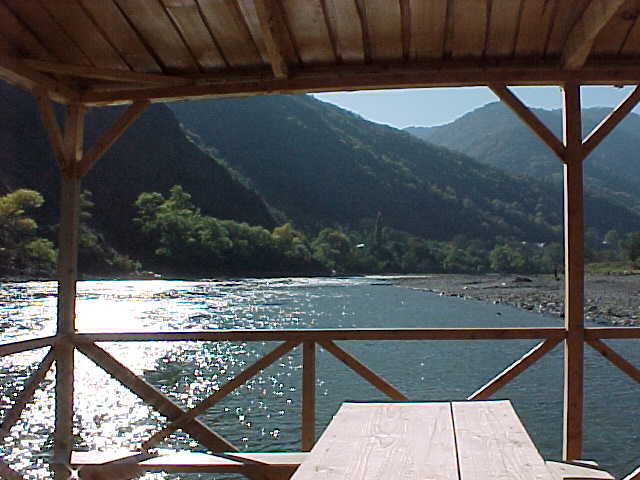
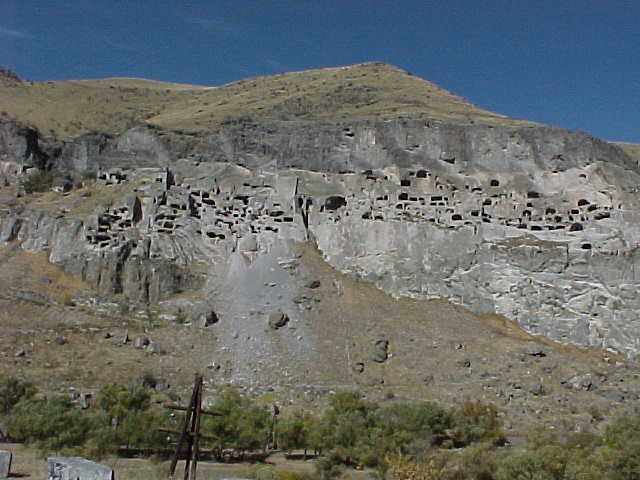
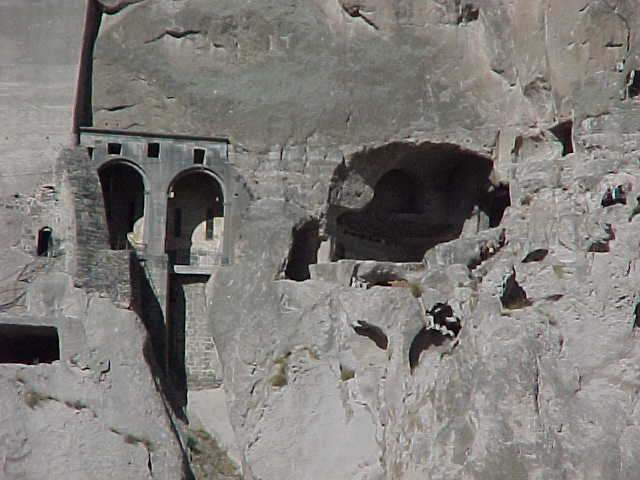
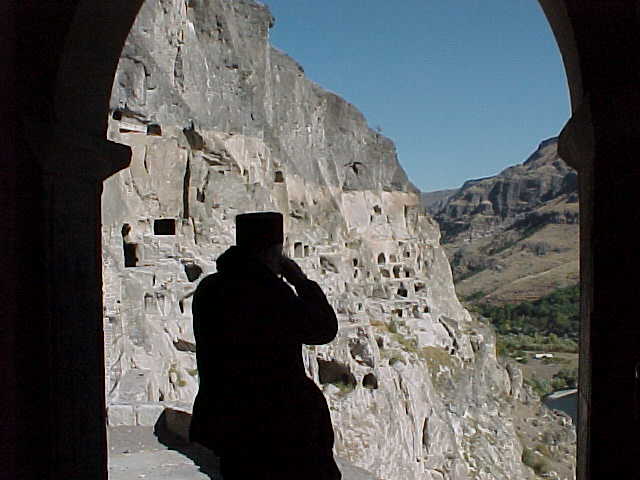
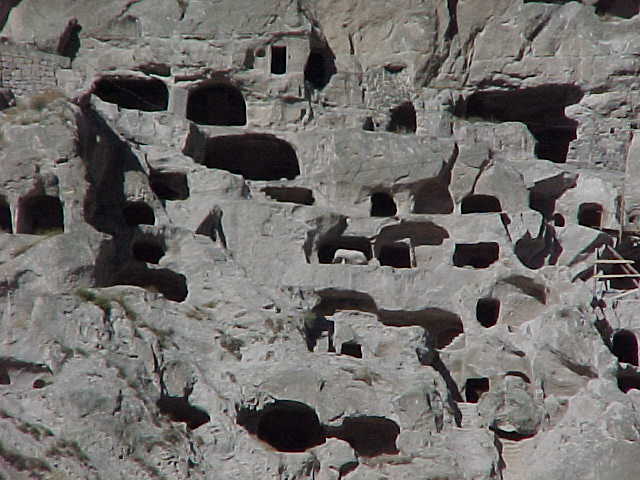
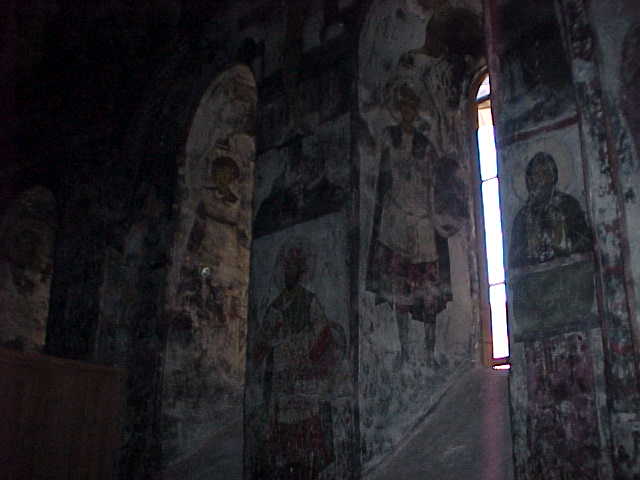
Abastumani is located up in the mountains, and though it was very warm, as we drove up, and at one place made a turn, it suddenly became very cool, probably a twenty-degree drop in the temperature. Fr. George first wanted to go to one sanatorium for children to give the leftover pirozhki to a couple of children he knew. But when we got there, one man told him that the building had been bought out by someone, and all the sick children were forced to leave, and were now scattered who knows where. Fr. George was very upset and said that this is what has been happening around there: places for sick people being bought out and the sick forced to leave without anywhere to go. Anyway, while driving further to our destination at the place where the sisters live (Fr. John lives in a house not too far from them) we came across some very poor people cleaning the street outside their home. Fr. George decided to give the pirozhki to them. One could tell very easily that these people were the simplest of the simplest, and the poorest of the poor. You should have seen how grateful they were! The old lady came up to Fr. George, and like a little girl wrapped her arms around his waist and thanked him and thanked him. It was very moving. He said that this is the area where the poorest people in Georgia live.
We then went on and drove by Fr. John’s place to where the sisters live. All the other clergy were there, waiting for us. We just kind of milled around while supper was being prepared. Fr. John and I went off to one side of the house and had a long talk about this and that, how things were at the monastery, and other things that had happened of interest since he had been with us. During this time, Fathers Gelasi, George and Otari were eating because they had decided to go on to Zarzma that evening, so they could get things ready and be there the next day to receive the Metropolitan. Then we ate and talked and then went to Fr. John’s house, where we three Americans spent the night. After we got our things situated, Fr. John asked us if we would like to go up the mountain to the observatory. They know the scientists up there and he said we would probably be able to look through the telescope. We agreed. We went up, but the person we wanted was gone for a while, but his family said he would be back shortly. During this time, Mother Sidonia came out, as she was staying with her daughter and family who live there. Then the man came and took us up to the observatory, gave us a talk on the history of the place and let us look through the telescope. We saw Jupiter with four of its moons, and then Saturn. It was all very interesting. It turns out this man used to be an avid atheist, but now has come to believe. He greatly respects Fr. John and wants to be received into our church.
We then returned and retired. Fr. John and Fr. Gabriel went elsewhere to sleep.